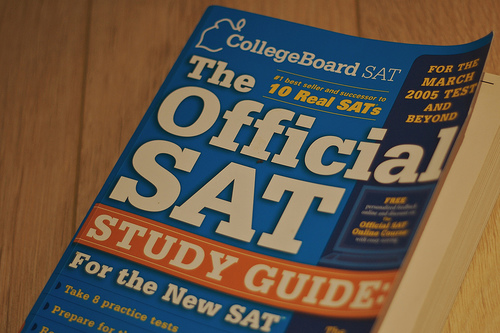A New Age of Standardized Testing

Studying for the SATs is a long and grueling process, which will hopefully be shortened with the new test.
College Board has decided to put the SATs online in 2023 internationally and 2024 in the U.S., along with other large changes to improve the test. This announcement follows years of Covid-induced online learning, along with online tests to match the curriculum. One continuous presence throughout the years of the “new normal” was in-person SATs. Now, that is changing too. Will it be for the better?
The SAT is a standardized test that high school students have taken for years, generally with the hope that their scores will impress colleges, increasing their chances of acceptance. Even during the new age of technology and the pandemic that ravaged the world, the SATs were consistently an exam taken on paper and in person. For these reasons, College Board’s announcement was very shocking; everything is online these days but why modernize the exam now? However, the SATs’ online format is not the only large change: The entire math section of the exam will allow calculators and the reading passages will be shortened, making the test 2 hours instead of 3.
These changes have sparked a lot of enthusiasm. Generations of students have had to drag themselves to school, after studying for hours on end at home, to take a complicated test for half of the day. For these reasons, its new length and simplicity will be practically revolutionary. Almost everyone who has taken the SAT can attest to the fact that the Math: No Calculator portion of the test is the bane of every test-taker’s existence. The loss of the section will be every student’s gain. Also, the newly shortened passages will be a wonderful way to keep students’ attention. Many testers find it difficult to read long passages that are not interesting, so shortening the passages, even slightly, may be the secret to boosting students’ scores. Molly Raber, a counselor at Hidden Valley High School, shared, “I think the digital assessment is going to be great for the kids and could potentially be great for the schools giving it.” Everyone may reap the rewards of the new format, not just students.
While many changes are being implemented to the test, some things will remain the same. For instance, students will still take the SATs in a testing site under a proctor’s guidance. This is to help students understand the rules of the test, time themselves, and, most importantly, prevent cheating. College Board would like to keep these exams as secure as possible, but some wonder if an online format will make them less secure. There are many ways to cheat using technology, and there are questions if having a proctor in the room will make much of a difference. Kathy Nguyen (10) said, “I’m not sure if the online SATs are actually going to make much of a difference with cheating because there will always be flaws in the system, but I’m happy that they are switching them to be online.” The common consensus among everyone seems to be that there are more pros than cons to the improved SATs.
Curiosity is surging about the format of the test. For instance, will students have to use their own laptops? What will be the solution if students do not have their own laptop? Will the pre-testing extensive process of filling out information about oneself remain, or will it all be automated now? All these questions and more will be answered as we near 2023. College Board has released very little about how the new test will work, making the anticipation of the test heightened. Raber summed up perfectly, “We will have to wait and see what that testing manual looks like to see how the different changes are going to affect the roles.”










